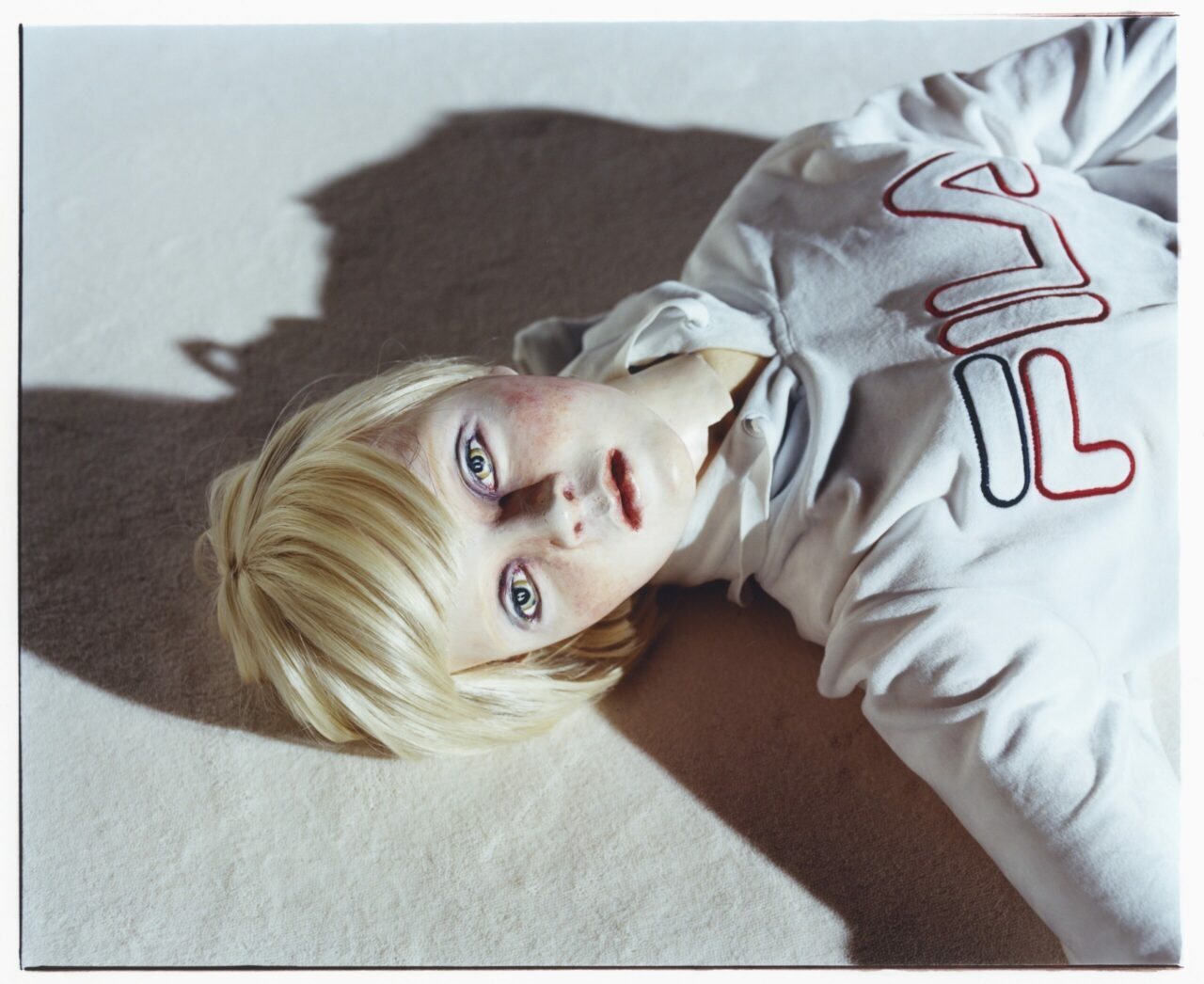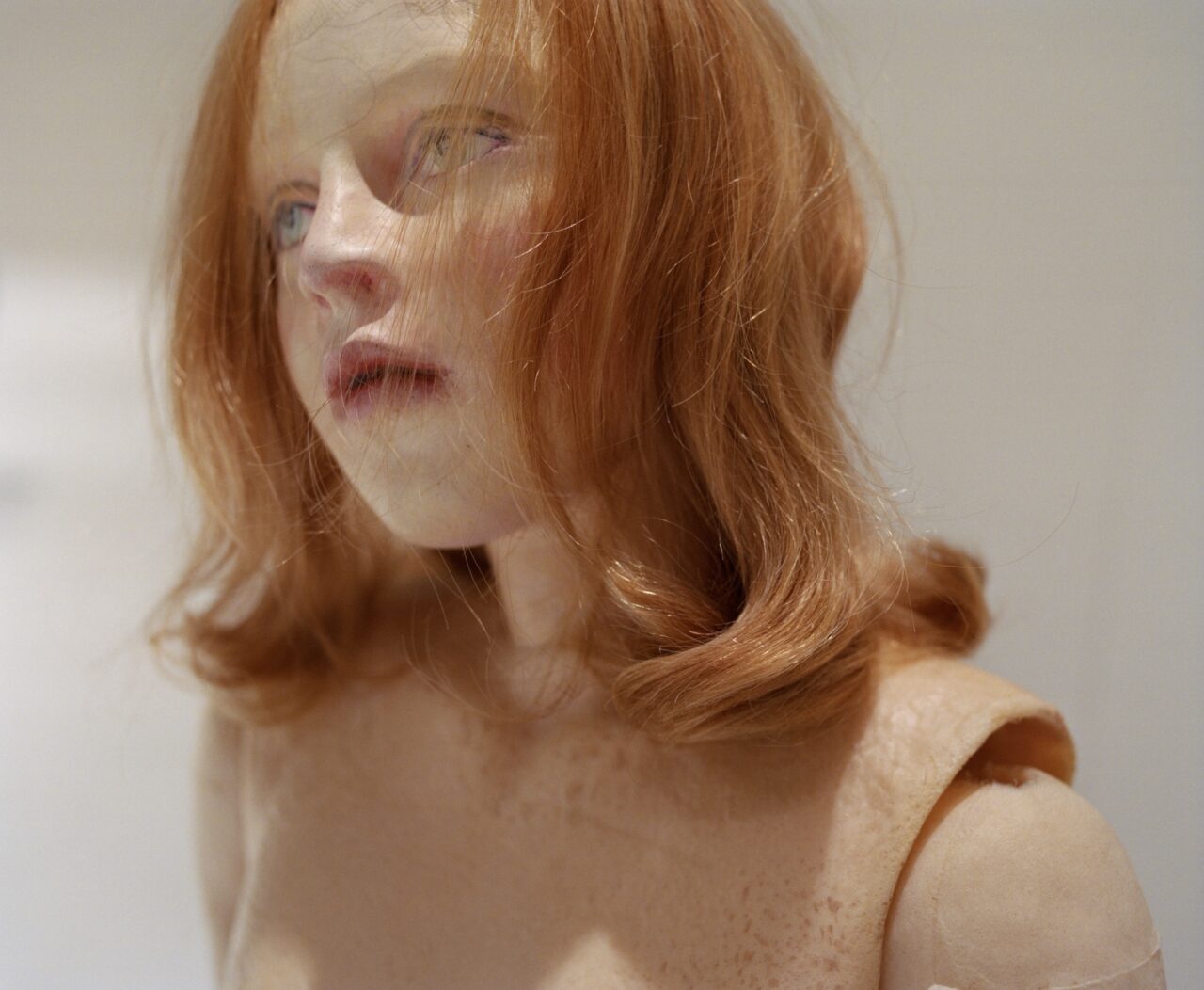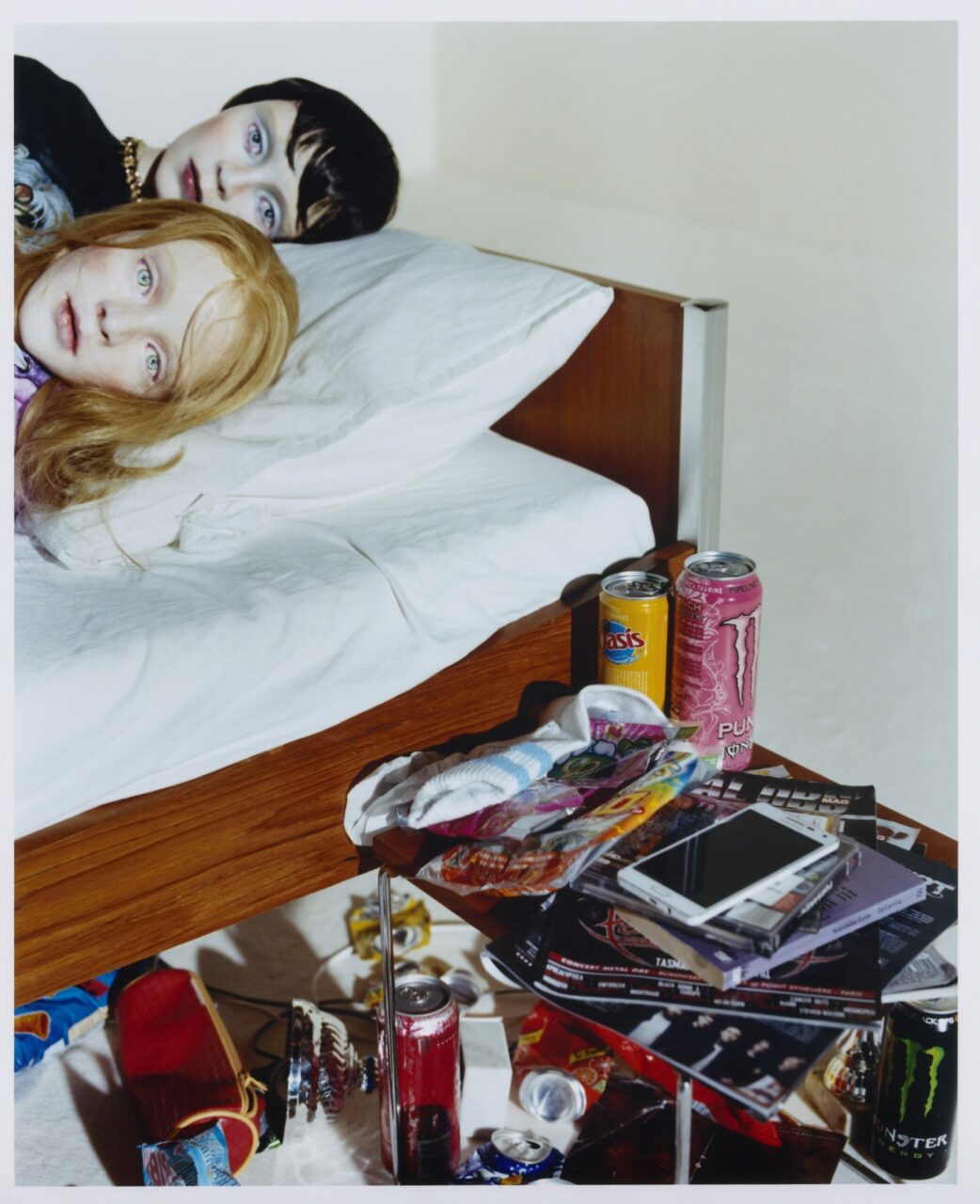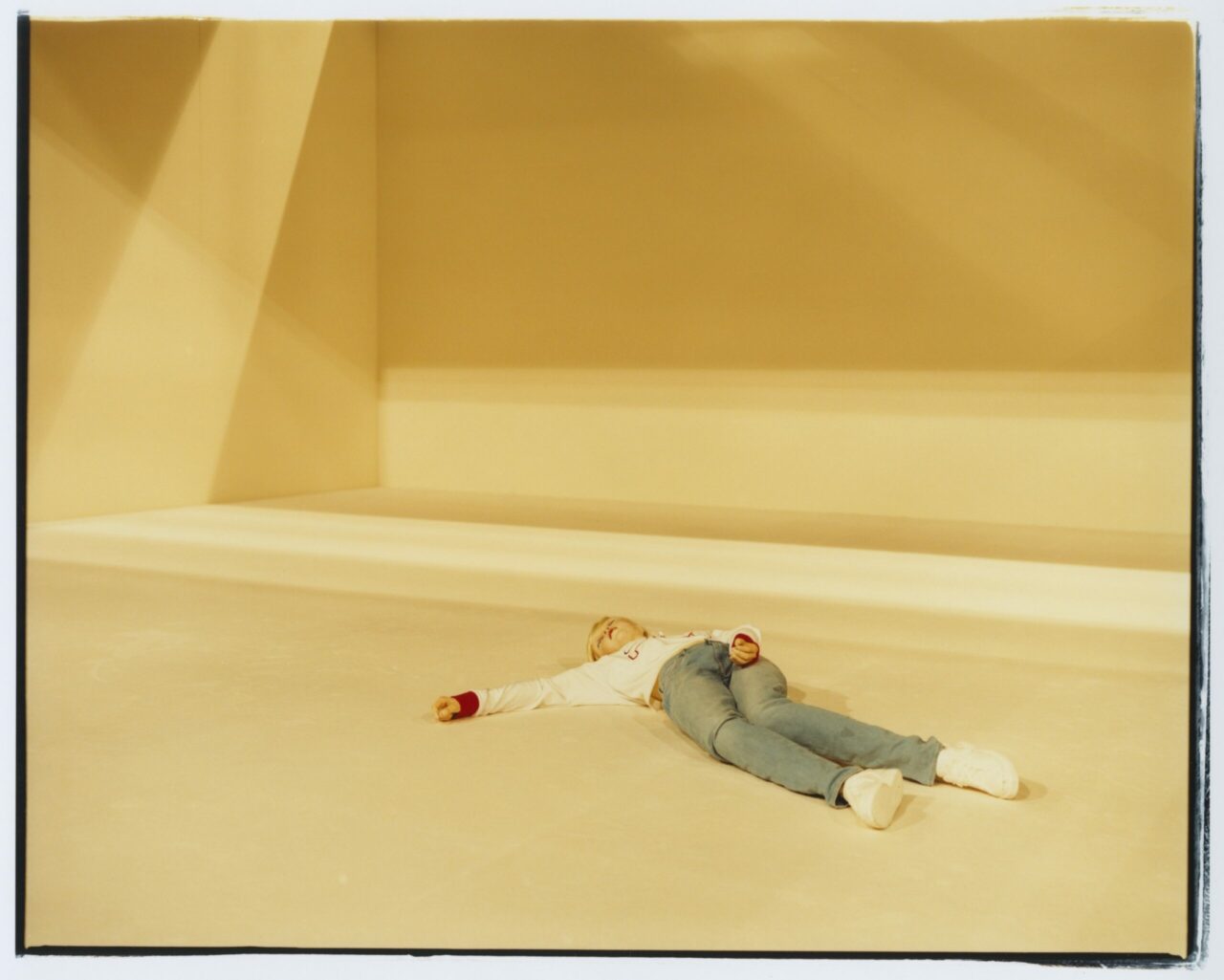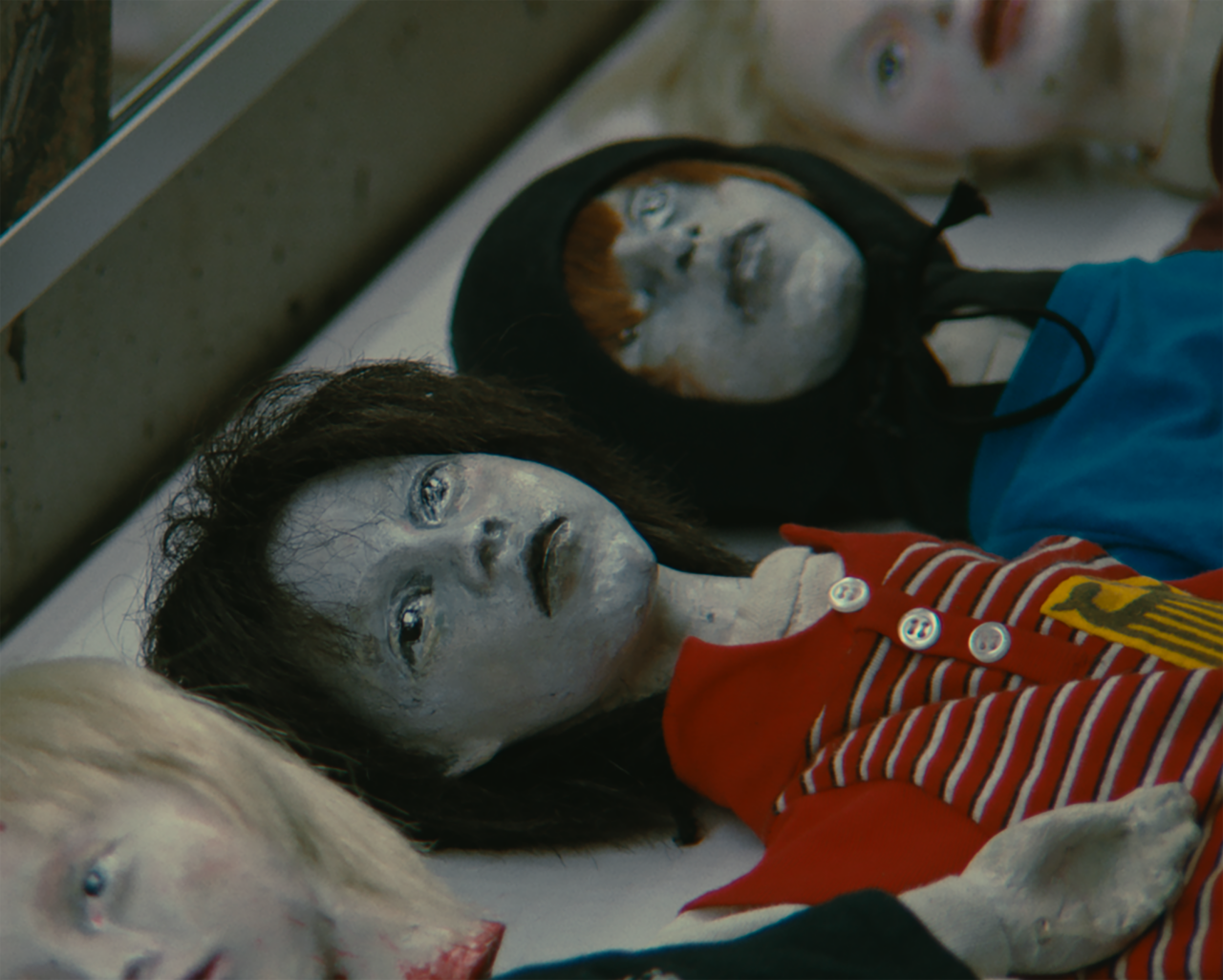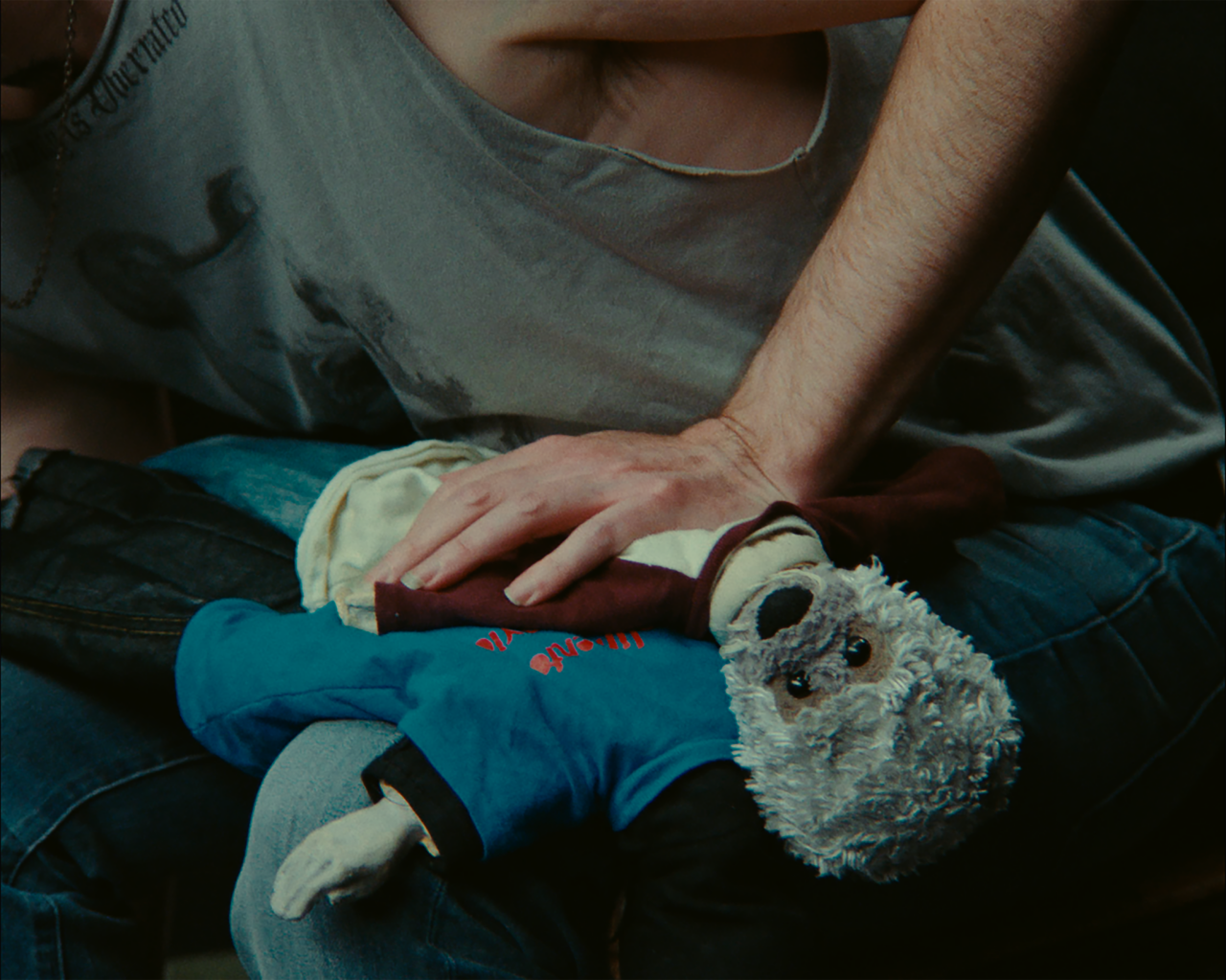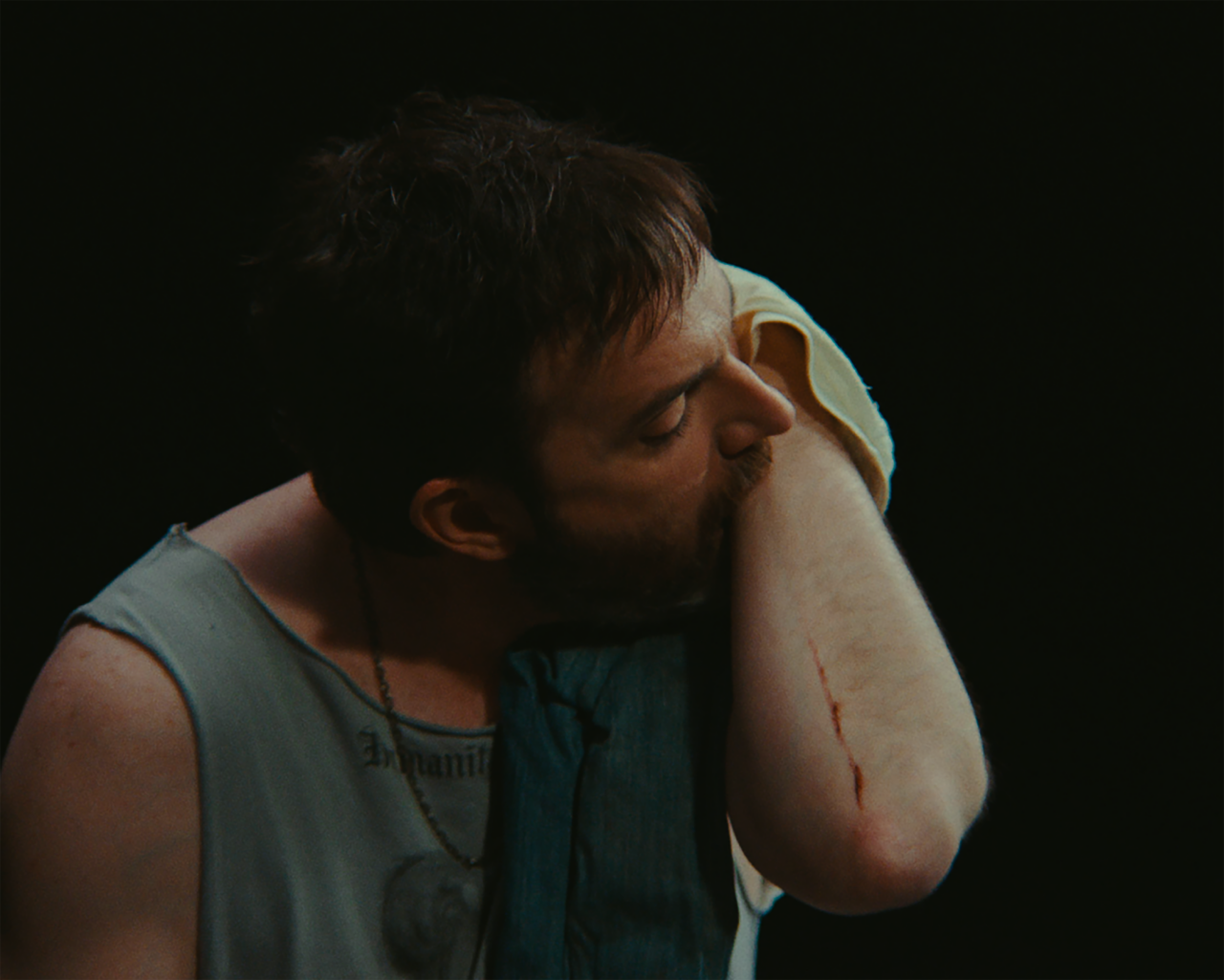You could almost take it as a warning, the title of Gisèle Vienne’s forthcoming exhibition at Haus am Waldsee, part of a joint presentation by three institutions to coincide with Berlin Art Week. ›This Causes Consciousness to Fracture‹ suggests a profound disruption, a shattering even, of consciousness itself. And indeed, over the course of two decades, the choreographer and director has consistently sought to dismantle patterns of perception. Vienne has developed a unique vocabulary of alienating effects, from intensely slowing down the action to outsourcing various acts to life-size puppets and anthropomorphic figures; she meticulously searches for methods suitable for plumbing the unrepresentable, the inexpressible, the subconscious, the repressed, and the traumatic, both performatively and dramatically. The same can be said of the exhibition at Haus am Waldsee. Together with ›I Know That I Can Double Myself‹, a second show at the Georg Kolbe Museum, that places Vienne’s work in dialogue with historical antecedents, as well as performances, a screening and an artist talk at Sophiensaele, the three institutions offer Berlin its first full, comprehensive look at the Franco-Austrian artist’s oeuvre.
Vienne’s practice is fuelled by emotional ruptures and interpersonal crises, intense feelings. Anger, mostly. But also the consequences of that anger and what it tends to leave in its wake: violence, both physical and psychological, power structures, social inequality, the normalising machinery of capitalist, neo-liberal societies. She is particularly drawn to the anger of adolescents, an anger that can be directed at others or at oneself. »I understand better now why I was so angry when I was 13«, she says. She does not see this anger as a subjective surge of emotion, but rather understands it politically. It’s not just hormones that set teenagers off, she says, but the structures they are forced into and the discrimination they face. Understanding injustice is, as Vienne herself puts it, the engine of her artistic work, which she processes by questioning our systems of perception.
»Vienne’s practice is fuelled by emotional ruptures and interpersonal crises, intense feelings. Anger, mostly. But also the consequences of that anger and what it tends to leave in its wake.«
Vienne’s life-size puppets, modelled on adolescents, serve as a unifying element in the Berlin survey; Sophiensaele offers a chance to see them in motion with the film ›Jerk‹ (2021) and the performance piece ›Crowd‹ (2017). By contrast, the exhibition at the Georg Kolbe Museum provides historical context by juxtaposing a selection of Vienne’s sculptures with works by female pioneers of the European avant-garde. Like Vienne a century later, these artists viewed puppet theatre as a space for experimental art that transcends traditional genres and categories. And at Haus am Waldsee, Vienne combines puppets created over more than the past twenty years with photographs to create a multi-layered installation, work that the artist herself describes as a »staging«. As in the dance choreographies for which she first became known, she employs a complex system of symbols and different media, creating interactions between them. The space, its history, architecture, light, sound, the movement of the visitors and the objects themselves all play a role.
›A Puppet Play‹, the subtitle of the show, underlines the supposed stillness of the puppets to be ›played‹. »I see the need to question silence and stillness, because silence always speaks and there is always movement in so-called stillness. It’s interesting to explore this in a museum, a place of common silence and lack of movement. Calling the exhibition ›Puppet Play‹ influences the public’s perception of it,« explains Vienne. The artist wants to highlight the frameworks through which we see the world and draw attention to »how systems of perception shape our society, our psychology, our bodies, our social interactions and our politics« to show »how one can actually work on society in a structural way«. Silence is not silent; on the contrary, it sharpens perception.
Born in Grenoble in 1976, Gisèle Vienne grew up in France and Germany. She studied philosophy before training as a puppeteer and founded her theatre company in 1999, initially with Etienne Bideau-Rey. Vienne developed her own unique style of expression combining dance, puppetry, performance, sound and visual arts. The artist is often asked about the multimedia approach that characterises all of her work, to which she replies that she doesn’t understand how one could work in any other way, unless for political reasons to silence certain media of expression. For her, all elements are always interrelated; museums, theatre, dance and film always work with sign systems that are inherently multimedia in nature. Vienne also likes to bring other artists on board: »Everything I do is created in collaboration«—sometimes with the American writer Dennis Cooper, at other times with the Italian composer and musician Caterina Barbieri, with whom she worked on the production ›Extra Life‹ for the Ruhrtriennale 2023. In fact, ›This Causes Consciousness to Fracture‹ takes its title from a track on Barbieri’s album ›Patterns of Consciousness‹ (2017).
»Silence is not silent; on the contrary, it sharpens perception.«
Everything is connected to everything, also in regard to content. »You can’t think about psychology without philosophy, without history,« says Vienne. She views physical expression as a mode of philosophical thinking, choreography as text: »With these representations of adolescents, I am writing a choreography that speaks about the types of emotions that societal violence gives rise to and the kinds of resistance it calls for.« For her, such resistance includes subcultures and countercultures, a key focus of ›Crowd‹, a piece to be performed at the Sophiensaele in September. The piece looks specifically at Berlin’s techno scene of the early 1990s, a scene in which Vienne herself was an active participant. It explores themes of closeness and rejection, sex and ecstasy, longing, loneliness, intoxication and disillusionment.
Violence is at the heart of ›Jerk‹, a solo puppet show that premiered in 2008. The film adaptation, to be screened on 15 SEP as part of Berlin Art Week, followed by a talk with the artist, was released in 2021. Written by Dennis Cooper, the story is based on true events from the 1970s: the sexually motivated murders of boys and young men by American serial killer Dean Corll with the help of his two teenage accomplices Elmer Wayne Henley and David Owen Brooks. In ›Jerk‹, Brooks—played by performer Jonathan Capdevielle—uses puppets to tell the story and re-enact the murders.
»It is about closeness and rejection, sex and ecstasy, longing, loneliness, intoxication and disillusionment.«
›Jerk‹ caused a furore at its premiere, partly owing to Vienne’s specific use of puppetry in the piece. The artist references the history of ›Guignol‹, the French Punch-and-Judy-like figure created to criticise social and political issues, but also modernist female artists who used puppets and dolls although (or precisely because) it was a form of artistic expression that has often not been taken seriously. The exhibition at the Georg Kolbe Museum places Vienne’s puppets in dialogue with the works of female avant-garde and Dada artists who realised their ideas with similar radicalism. The exhibition includes, for example, Hannah Höch’s Dada dolls, marionettes by Sophie Taeuber-Arp and creations by the late Munich puppet maker Hermine Moos, best known for her life-size rendering of Alma Mahler that she made for Oskar Kokoschka as a substitute for his former lover. Also included are artists who explored doll- or puppet-like qualities in other forms of representation, such as Claude Cahun’s photographic self-portraits, the socially critical paintings and illustrations of Czech artist Milada Marešová, and the eccentric dance pantomimes of Valeska Gert. »I wouldn’t be working this way today if it weren’t for these kinds of modernist art pieces«, says Vienne with a nod to her predecessors. She stresses the importance of keeping the subversive ideas of these women artists alive—and of continuing to rewrite history.
In the framework of the presentations in Berlin, a new publication dedicated to the collaborative work of Gisèle Vienne and Estelle Hanania including texts by Anna Gritz and Elsa Dorlin will be published by Haus am Waldsee together with Spector Books this autumn. 180 pages, German/English/French, 152 colour images, hardcover. On site at Haus am Waldsee and Georg Kolbe Museum: 49 Euros / In bookstores 78 Euros.
